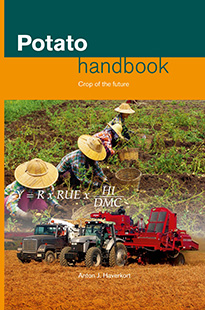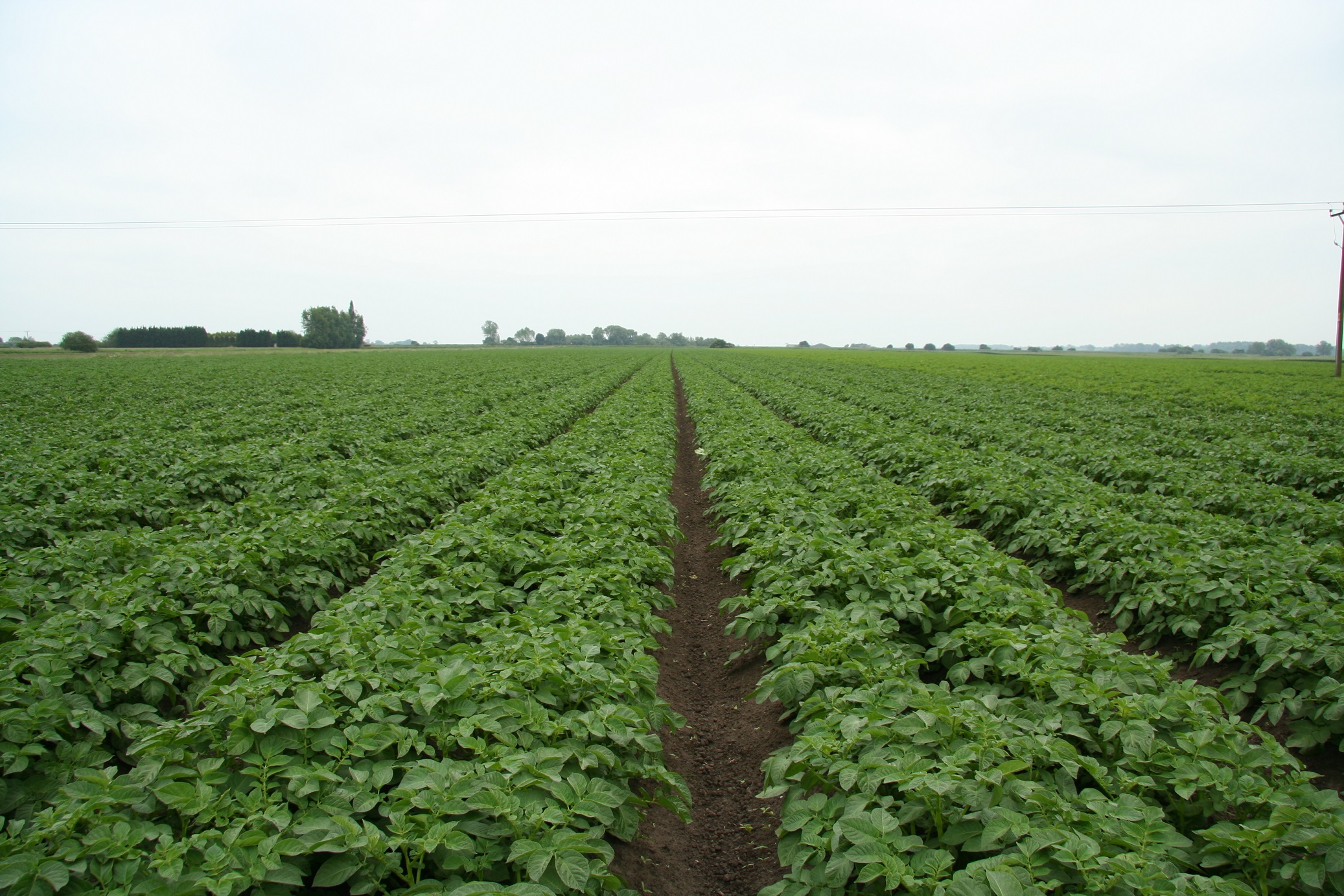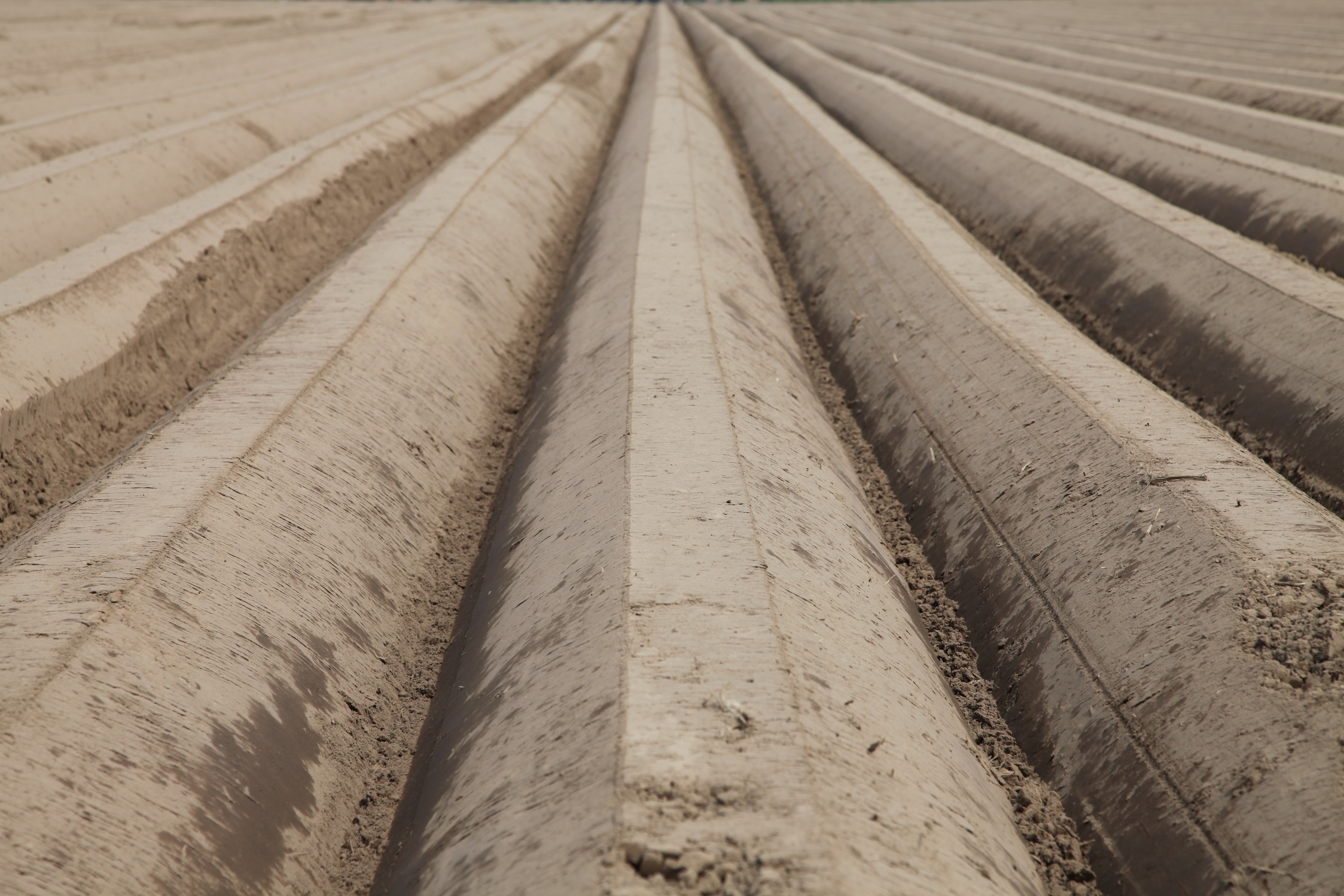Already a subscriber? Activate your premium account

Potato Handbook

To optimally intercept solar radiation, the grower needs to create a crop that covers the soil with green foliage as fast as possible after planting. Planting the seed tubers superficially helps as this assures a rapid emergence. Planting seed tubers in a square pattern to rapidly allow plants to touch each other between and within rows after emergence seems a logical step too.
When the objective is to arrive at four plants per m2 (40,000 plants per hectare), such a pattern is 50 cm x 50 cm. This, however, beyond allotment gardens and in the bed planting system, is not a working practice. It does not leave enough space between plants to allow a proper ridging, nor does it leave enough space for tractor wheels to pass in mechanized production systems. A most common planting pattern in India and in continental Europe to arrive at four plants per m2 is spacing rows 75 cm apart and the seed tubers within rows at 33 cm. The seed tubers are planted in a shallow furrow with a depth equal to the diameter of the seed tuber and covered by a layer of soil varying between 10 and 15 cm. The final ridge shape is either achieved at planting, or after one or two hilling operations.
In the United Kingdom, France and the United States among others, where the distance between the tractor tires and most operations is a multiple of 90 cm, it is common to space the rows at 90 cm and the plants within the rows at 28 cm. In seed production where 6 plants per m2 is aimed at, the distance between the plants within the row is 22 cm in a 75-cm row system and 19 cm in a 90-cm system. The 90 cm row width has some advantages over the 75 cm one. It requires less passages across the field, so economizes on labor and machinery at planting, ridging and harvest. This is an advantage in large-scale agriculture. It also allows larger ridges to be built up, to more effectively protect the tubers from light, rain, pests and diseases. It does take, however, more time, a few days, for the crop to achieve full ground cover after emergence. This means that its yielding ability is slightly less by one or a few percentage points. When the crop is early maturing or harvested prematurely, the yield difference between the two systems is noticeable.
A two-row bed system is occasionally found in mechanized production systems where the plants are not oriented besides the other but alternate in a zig-zag manner to reduce overlap and accomplish earlier full crop cover. This planting pattern is most common in many Asian countries such as China and Vietnam. Overall, the two row pattern permits the plants to be more evenly spread than in the single-row pattern, an earlier ground cover is reached and its operations are less laborious while hilling (ridging). Irrigation by furrow or drip also requires less effort and investment.

Events
©2015 - 2024 Potatoworld | Webdesign and realisation COMMPRO